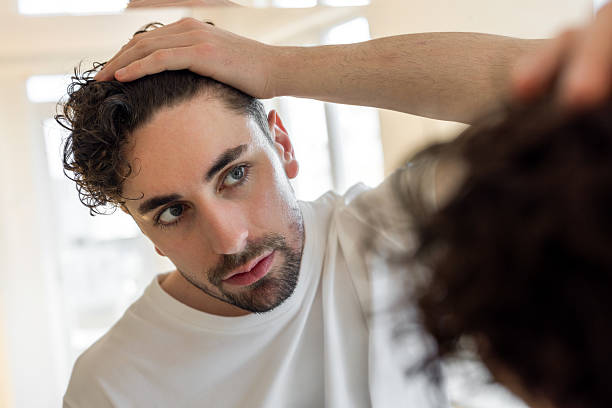Hair loss can be a distressing experience that affects confidence and overall well-being. Among the various solutions available, Hair Transplant in Dubai has gained popularity as a viable and effective method for restoring hair, especially for those experiencing receding hairlines. But a common question arises: Is a hair transplant effective for receding hair? To address this, it’s essential to understand the nuances of hair transplantation, how it works for receding hairlines, and what results users can expect.
Understanding Hair Loss and Receding Hairlines
The Causes of Hair Recession
Hair recession typically results from a combination of genetic, hormonal, and environmental factors. The most common cause is androgenetic alopecia, often referred to as male or female pattern baldness. This condition leads to gradual thinning of hair, primarily at the temples and crown areas, creating a receding hairline.
Impact on Appearance and Confidence
A receding hairline can significantly alter one’s appearance, often leading to decreased self-esteem. Many seek effective solutions that can provide natural-looking results and restore a youthful appearance.
How Hair Transplant Works for Receding Hair
The Basic Procedure
Hair transplant involves extracting healthy hair follicles from a donor area—usually the back or sides of the scalp—and implanting them into areas affected by hair loss. This procedure is meticulously performed to ensure the transplanted hair blends seamlessly with existing hair, restoring density and coverage.
Suitability for Receding Hairlines
Hair transplants can be highly effective for receding hairlines because the donor hair follicles retain their genetic resistance to balding, allowing them to grow long-term in the recipient area. The procedure can recreate a natural hairline, giving a more youthful and balanced appearance.
Types of Hair Transplant Techniques
- Follicular Unit Transplantation (FUT): Involves removing a strip of scalp tissue, dissecting it into individual follicular units, and transplanting them.
- Follicular Unit Extraction (FUE): Involves extracting individual follicular units directly from the donor area, minimizing scarring and downtime.
Both techniques are effective, and the choice depends on individual preferences and specific hair loss patterns.
Effectiveness of Hair Transplant on Receding Hair
Natural-Looking Results
When performed by skilled professionals, a hair transplant can provide highly natural results. The transplanted hair follicles continue to grow naturally, blending with existing hair, thereby effectively camouflaging receding areas.
Long-Term Hair Restoration
Hair transplants are considered a permanent solution because the transplanted follicles are resistant to the hormones that cause hair loss. This means that, with proper care, the results can last a lifetime, making it a highly effective option for receding hairlines.
Limitations and Expectations
While hair transplants are effective, their success depends on factors such as the extent of hair loss, the quality of donor hair, and the surgeon’s expertise. It’s important to have realistic expectations regarding the density and coverage achievable through transplantation.
Factors Influencing Transplant Success on Receding Hair
Donor Hair Quality and Density
The health and density of the donor hair significantly influence the final outcome. A rich, healthy donor area ensures better transplant results and more natural hair growth.
Hair Loss Pattern and Progression
Understanding the pattern and rate of hair loss helps in planning an effective transplant strategy. Early intervention often yields better results, especially when addressing receding areas before extensive thinning occurs.
Post-Procedure Care
Following the recommended post-transplant care instructions is crucial to maximize graft survival and achieve optimal results. Proper care minimizes complications and promotes healthy hair growth.
Advantages of Choosing a Hair Transplant for Receding Hair
Permanent and Natural Results
Unlike temporary solutions such as wigs or topical treatments, a hair transplant offers a permanent fix that looks and feels natural. This makes it an attractive option for long-term hair restoration.
Minimal Downtime
Modern techniques like FUE allow for quick recovery with minimal discomfort, enabling individuals to return to their daily routines sooner.
Customized Treatment Plans
Each hair transplant is tailored to the individual’s hair loss pattern, hair type, and aesthetic goals, ensuring personalized and effective results.
Is a Hair Transplant Suitable for Everyone?
Ideal Candidates
People with stable hair loss patterns, good donor hair quality, and realistic expectations are ideal candidates. It’s particularly effective for those with receding hairlines and moderate to severe hair loss.
When to Consider Waiting
In cases where hair loss is ongoing or extensive, a consultation with a specialist can help determine the best timing and approach for the procedure.
Final Thoughts
In conclusion, a hair transplant Dubai can be highly effective for addressing receding hairlines when performed under the guidance of experienced professionals. The procedure offers natural, permanent results that can significantly improve appearance and confidence. While individual results may vary based on various factors, the overall success rate is encouraging for those seeking a long-term solution to hair recession.







0 Comments